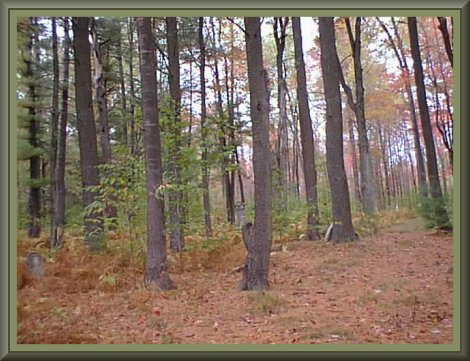|
|
|
|
 |
|
[Page 15]
CHAPTER ELEVEN
A VISIT TO BARCLAY IN 1928
At the present time bridges have been abandoned, roads are not kept up, and it is difficult to ascend the steep, winding mountain routes where much traffic used to go. Yet it can be done, and is done, each year by some, because the old town’s spell still is upon those who once played upon its streets and later worked its mines.
They drive through Sand Run until they reach the Joseph Pelton home, the last house standing there. There perhaps they stop for a moment to get a refreshing drink of water and talk for a few minutes of the way things used to be. Probably they will turn and look back toward the road once leading to Long Valley or perhaps glance ahead looking for the ruins of the old school house where they learned their A. B. C’s. Everywhere the see only desolation.
Caved-in cellar walls here and there are in evidence and round about them in places are fruit trees, no doubt planted by some home loving souls who had believed the town would live. At one time such prosperity was being experienced that its residents thought the place could never die. Yet today the only monuments to its former greatness are these tumbled-down cellar walls. Weeds are grown high along the road which is filled with stones and here and there big ruts. Yet in places, it is still good, for there the culm from the mines was mixed with salt and the mixture has withstood the wear of the years.
From Pelton’s the visitors may drive on up through Barclay, stopping for another moment at the spot where Melville’s saloon used to stand. Almost across the way was a block of living quarters and a short distance beyond was the big company store and beyond that the barber shop where Frank McGinnis used to hold forth and furnish a meeting place for men to gossip in the days before women began to intrude.
Frank’s sister Margaret conducted a dressmaking business. Later they ran a general store in Powell for many years.
Across the little creek was a road leading to the school and to the mouth of No. 3 mine and beyond that the Price block where five children died during the epidemic of that dread disease, diphtheria. A little further up the road the doctor’s house and office stood on opposite sides of the lane leading to the big horse barns, and across the street was one of the big saw mills. Houses lined both sides of the street but today there are not even any ruins there to show what used to be. The Presbyterian church, Odd Fellows Hall and skating rink also are gone without trace, but one can see where the superintendent’s home stood until a few years ago, and the site of the old Catholic church is still apparent near the cemetery.
A number of families still have greatly cherished pieces of wood from the ruins of this church and Mrs. Sheehan of Towanda is the proud owner of one of the Stations of the Cross, the picture of the third time Jesus fell, which once hung on the walls there.
A visit to the cemetery is one of the saddest parts of a home coming to the deserted village. There among the fallen tombstones one can find evidence of the joys, the pains, the heart aches of this town that used to be. A fence at one time separated the Catholic and Protestant sections but that division no longer can be found. The whole large cemetery, once beautiful and well kept, is now a tangled mass of trees and underbrush with here and there large gaping holes where cave-ins have been caused by mining underneath. Accompanying photographs will give some idea of how things are today. The iron fence seen in the picture is still in good condition and the gates swing as easily and as perfectly as the day they were hung.
[Photographs (3)]
Here are some snapshots taken in the old cemetery at Barclay on the
day of the reunion on the mountain in 1928. The man in the picture is County
Commissioner C. E. Drake, once a resident at Foot of Plane.
A movement is now under way among those having relatives buried there, to have the cemetery cleaned out and once again kept as it was in the days gone by.
Coming back from the cemetery one can circle around by the great massive culm banks that seem almost mountains in themselves, and then cut across the fields to the picnic ground where the reunions are held, just across the road from the old picnic ground which was used for fifty years.
Proceeding on out the road toward Carbon Run, one will come first to
a little shack set back in a clearing among the trees. There George VanLuven
lives all alone as a hermit enjoying his own company in the midst of a
desert isle. About a mile farther on, comes the surprise of one’s life
for suddenly signs of civilization on the mountain break into view. It
is there, near old Carbon Run, where the LeRoy Coal Company has under way
its operations previously described.
|
|
|
|
|
Published On Tri-Counties Site On 9/13/99
By Joyce M. Tice
Email: JoyceTice@aol.com